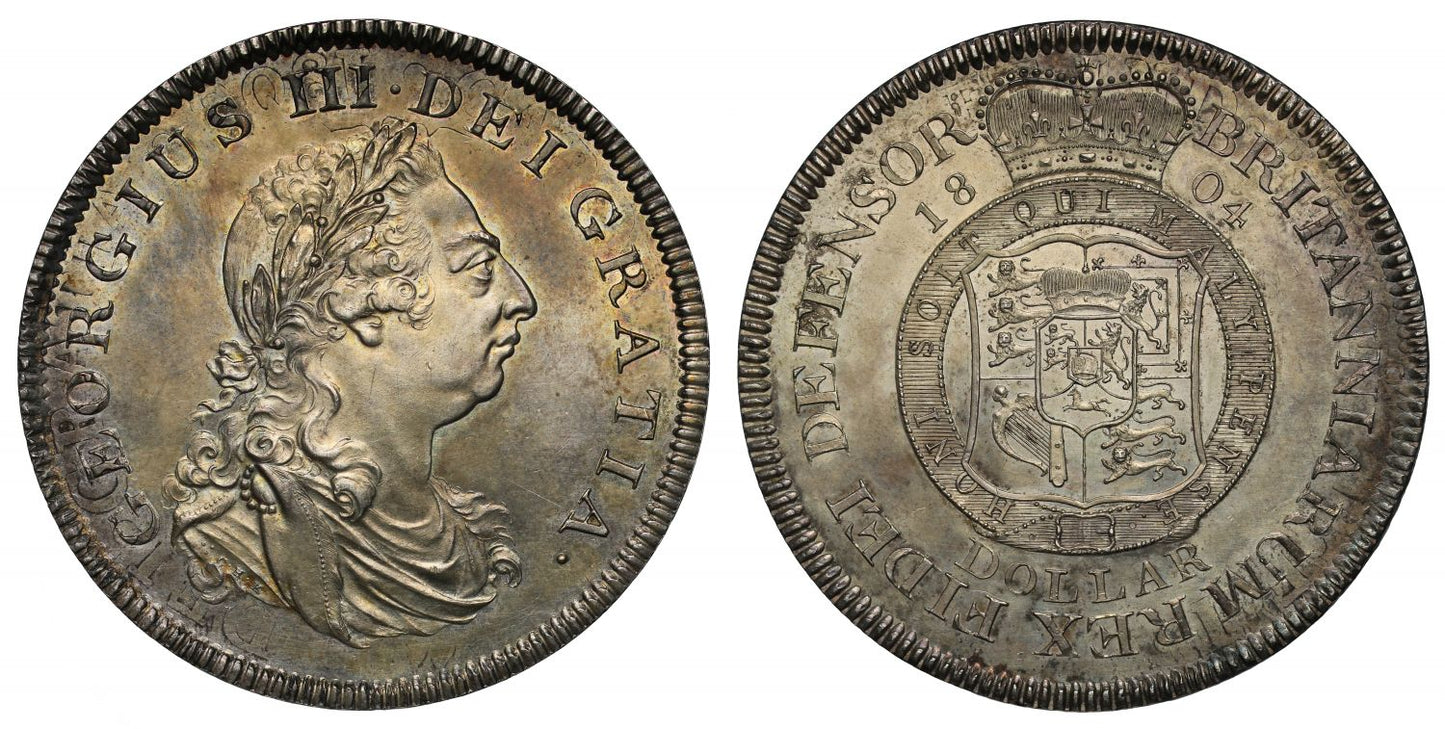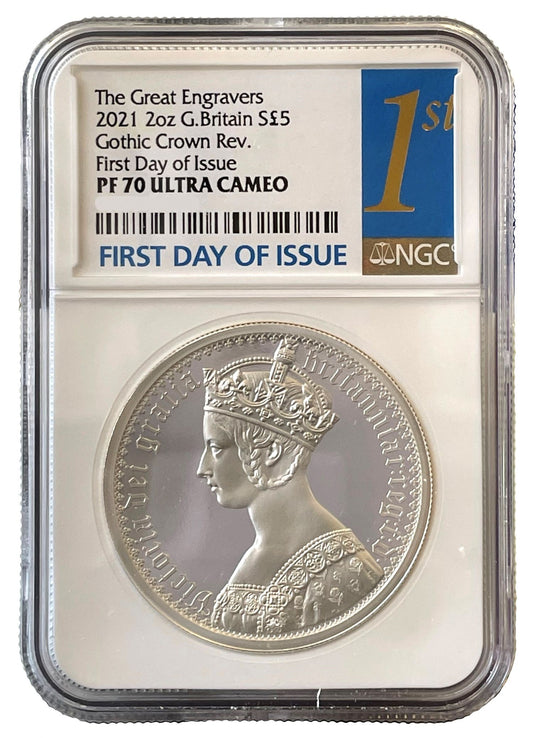FAQs
What makes a coin valuable?
I have coins to sell, what’s the next step?
How will my purchases be shipped?
What happens if I’m not entirely happy with my purchase?
George III 1804 Pattern Garter Dollar
George III (1760-1820), silver Pattern Garter Dollar, 1804, struck by the Soho Mint entirely over a Spanish Empire Eight Reales, engraved by C H Kuchler, laureate and draped bust right, .:C.H.K on truncation, Latin legend and toothed border surrounding, GEORGIUS III. DEI GRATIA ., top leaf points to upright of letter D, undertype of Eight Reales visible both sides, rev. struck en medaille, quartered shield of arms with a crowned escutcheon of the Arms of Hanover, within crowned Order of the garter, with French motto HONI SOIT QUI MAL Y PENSE., date either side of crown, DOLLAR below garter, Latin legend and toothed border surrounding, BRITANNIARUM REX FIDEI DEFENSOR, edge showing decoration from the Eight Reales (ESC 182 dies I/3; Bull 1963; L&S 31). Attractively toned, practically as struck, very rare, has been graded and slabbed by NGC as PF65.
NGC certification 2724337-001 - their label shows die variety incorrectly as J/3
Enough of the undertype of the Eight Reales is apparent to see that this is an 1803 dated Mexico City Mint piece, when such details are visible it can only enhance the interest in such a proof striking.
This coin ties for the highest graded example of this pattern (as labelled as of October 2017) on the NGC Census.
The abbreviated Latin legends translate as on the obverse "George the Third by the grace of God" and on the reverse "King of the Britons, Defender of the Faith" with the French garter motto meaning "Evil to him who evil thinks."
The Bank of England Dollar was the successor to the emergency countermarked coins that were struck in relation to a crisis with the silver coinage at the end of the 18th h Century, where the supply of silver in commerce and for the Mint had dwindled partly due to the Wars in France after the Revolution in 1797, but mainly because the Mint was saddled with a maximum price they were allowed to pay for silver by a law of 1601, which 175 plus years later was not adequate for purpose. Therefore, from March 1797 the Bank of England released stocks of its Spanish dollars and halves each with an oval countermark. They did not really alleviate the problem of smaller change and were issued on an off with the oval countermark, until a more complex larger octagonal mark replaced them from January to May 1804, as the oval pieces were being counterfeited. Eventually the octagonal replacements were also copied widely and the ultimate solution was to have the Soho Mint totally overstrike the remaining stocks of Spanish Dollars with a new Bank of England design. This piece was one of the proposed pattern designs for this overstrike of the dollar that was not ultimately adopted, and was a similar design to that just introduced on the gold Half-Guinea of 1804-13 and the later Military Guinea of 1813.
FAQs
What makes a coin valuable?
I have coins to sell, what’s the next step?
How will my purchases be shipped?
What happens if I’m not entirely happy with my purchase?













